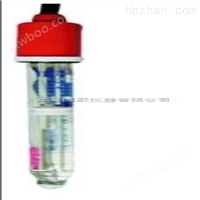Quotation for High Temperature PH Glass ElectrodePH glass electrode, also known as PH probe, is the part of the pH meter that comes into contact with the measured substance. It is a device used to measure the electrode potential and is an important accessory of the pH meter.
Quotation for High Temperature PH Glass Electrodeinspect
1. Place the pH glass electrode and reference electrode into a standard buffer solution with pH 7.00. When using calomel electrode as the reference electrode, the millivolt reading should be 0+/-30 millivolts; When using Ag/AgCl electrode as the reference electrode, the reading should be 0+/-80 millivolts.
2. Put it into a buffer solution with pH 4.00, and the reading should be greater than 160 millivolts.
3. When using a glass electrode as the indicator electrode and a calomel electrode as the reference electrode, the potential difference changes by 59 millivolts with a pH change of 1 unit at 25 degrees Celsius.
4. If the reading does not match the above range, cleaning should be carried out.
use
1. To use a new pH electrode, adjustments should be made by soaking it in distilled water for a period of time to form a good hydration layer; The soaking time is related to the composition of the glass and the thickness of the film. Generally, the soaking time for newly made electrodes and electrodes with low glass conductivity and thicker films is 24 hours; On the contrary, the soaking time can be shorter. The glass electrodes produced recently include E-201-C and 65-1Q composite electrodes. Due to the improvement of glass quality and manufacturing technology, their instructions indicate that the electrodes should be used for initial or long-term use. When used, they only need to be soaked in 3N KCL solution or deionized water for 2-10 hours.
2. After measuring a certain solution, rinse carefully and absorb the water droplets before measuring the next sample.
3. During the measurement, the bubbles of the glass electrode should be completely immersed in the solution, so that they are slightly higher than the ceramic core end of the calomel electrode.
4. When measuring, a magnetic stirrer should be used to stir at an appropriate speed. The stirring speed should not be too fast, otherwise bubbles may adhere to the electrode, causing unstable readings.
5. Samples with oil stains, especially those with floating oil, should be cleaned with CCI4 or acetone after use. Then, they should be rinsed with 1.2mol/L hydrochloric acid and distilled water, and soaked in distilled water for one day and night to balance before use.
6. After measuring the turbidity of the liquid, rinse it with distilled water in a timely manner.
7. After determining the solution of the emulsion, the electrode should be cleaned promptly with detergent and distilled water, and then soaked in distilled water.
8. There should be no bubbles between the inner electrode of the glass electrode and the bubble. If there are bubbles, they can be gently shaken to allow them to escape.

